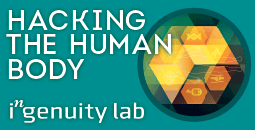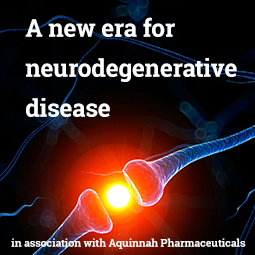SAP is teaching businesses to bridge the experience gap
Though most companies believe they offer a first-rate service, customers often disagree. To close the experience gap, businesses must question how well they really know their client base

It is imperative that businesses gain a comprehensive view of their operations through a digital lens, embed intelligence into business processes and proactively take steps to close the experience gap
Think about the last time you stayed in a hotel – what was the experience like? Was it memorable, or a horror show best forgotten? Perhaps a hotel was forgone in favour of an alternative type of accommodation; if so, what made the experience memorable?
Many variables can affect a guest’s experience, from the ease of booking the stay to whether the reality of the location and lodging met expectations. Then there’s the in-room experience: cleanliness, the amenities provided, the entertainment system and the feeling of being a valued guest.
According to SAP’s Capital Markets Day 2019 report, 80 percent of CEOs believe their company offers a superior experience, but only eight percent of customers agree. That’s a staggering gap. A 2018 report by New Voice Media, meanwhile, stated that 67 percent of customers in the US are ‘serial switchers’, flipping from one brand to the next because of what they perceive to be a poor customer experience – an astounding increase of 37 percent in just two years. In the experience economy, not having a deep, accurate picture of the entire experience – customer, employee, product and brand – can be fatal to a business.
New Voice Media’s report in numbers
30%
of US customers were serial switchers in 2016
67%
of US customers were serial switchers in 2018
Feelings shape perceptions
Research shows that customer experience is not rational – it is based on emotions and perceptions that are cumulative, not episodic. Prospective and existing customers compare each new experience to previous ones, whether with a direct competitor or an unrelated business in a different industry. Customers set the standard for the experience they want based on an assembled mental portrait of expectations.
Joe Pine, a customer experience consultant and co-author of The Experience Economy, has argued that businesses must orchestrate memorable events for their customers, and that memory itself becomes the product. Every interaction has the ability to form a negative or positive emotional impression; customers remember how it feels to deal with any company.
“How well companies perform in the experience economy depends on how well companies know their customers and how connected that is to their business,” said Mala Anand, President of Intelligent Enterprise Solutions and Industries at SAP. “Not how well they think they know their customers, but how well they actually know their customers across every possible touchpoint. There is an immense difference between an assumption and real insight that allows you to anticipate and to act.”
Customers base their buying decisions not only on features and price, but on the entire buying experience, which includes what a brand stands for and how those values are reflected in practice – from diversity and inclusion to sustainability and the environment. Understanding a customer’s perceptions about a brand also includes understanding their personal values. Purpose-driven purchasing is having a big impact on companies. In fact, according to the 2018 Edelman Earned Brand: Brands Take a Stand report, almost two thirds of consumers across the globe base their purchase decisions on what they perceive a brand’s beliefs to be. They are choosing, switching, avoiding or boycotting brands based on the brand’s perceived stance on societal issues.
Edelman’s Brands Take a Stand report in numbers
13%
increase in belief-driven buyers from 2017 to 2018
64%
of consumers are belief-driven buyers
65%
of belief-driven buyers wouldn’t buy from a brand because it had stayed silent on an issue
67%
of belief-driven buyers bought from a brand because of its stance on a controversial issue
“Buyers believe that companies have a responsibility in society to help solve challenges as they relate to things like the economy, societal challenges and the environment,” said Alicia Tillman, SAP’s Global Chief Marketing Officer. “Buying with purpose will emerge as the sustainable differentiator that separates one company from another.”
Transforming experiences
To thrive in a purpose-driven world where understanding values and experience is key, business leaders need to evolve further and faster on their digital transformation journeys. It is imperative to gain a comprehensive view of the business through a digital lens, embed intelligence into business processes and proactively take steps to close the experience gap.
To successfully bring all these elements together, organisations require a comprehensive strategy that takes them beyond digital transformation. SAP’s strategy is to bring the ‘intelligent enterprise’ model to life in the context of every industry and line of business. In an intelligent enterprise, data becomes insight, feeding process automation and innovation. The strategy-to-execution digital transformation journey starts by defining and prioritising business outcomes. It then uses intelligent technology to connect cross-functional business processes and data across an organisation to achieve business goals.
Research shows that customer experience is not rational – it is based on emotions and perceptions that are cumulative, not episodic
“Digital transformation is just the beginning,” said Anand. “First and foremost, businesses need to think about their desired business outcomes before thinking about the technology. Delivering exceptional customer experiences is the key to survival for any organisation and is often the starting point for many organisations as they embark on their journey to become an intelligent enterprise. Experience management, as part of the intelligent enterprise strategy, streamlines the customer experience from beginning to end, seamlessly delivering valuable data insights and predictions throughout the entire process.”
Building trust
While each consumer has different criteria and priorities, great customer experiences should be consistent, responsive, memorable, transparent and based on trust. According to SAP’s January report, Mind the Gap: The Trust/Experience Paradox, customer relationships increasingly need to be built on trust, but public trust is at an all-time low. The gap between what people want and what they expect has been dubbed the ‘trust deficit’. This historically low level of trust offers customer-focused organisations a rare opportunity to differentiate themselves from competitors. If customers have a consistently positive experience with a company, greater trust and loyalty can be built.
Technology is not just changing how companies record and measure experiences; it is also transforming the nature of the experience itself. According to the SAP report The Future Customer Experience: Five Essential Trends, technology-driven trends shaping the experience economy include personal meaning, AI intermediaries, customers as contributors, ‘markets to mobs’ and aligning values. As such, it’s important for companies to understand what each trend means for businesses and their customers.
First, customers are increasingly choosing to focus their limited time on experiences that have personal meaning to them. This is obviously different for each customer, but experiences generally have more meaning if they involve some element of entertainment, human connection, learning or aspiration. If a company simply offers a basic product or service and doesn’t provide a meaningful total experience around it, customers could choose to spend their time and
money on other things that do.
Customers are becoming increasingly comfortable with AI intermediaries taking over many of their buying decisions. As such, though unwittingly, they are likely to use ‘set it and forget it’ AI algorithms to take over routine buying decisions, such as keeping the house stocked with cleaning supplies or paying bills. This means they can spend their time on more meaningful experiences.
While taking a background role in the sales process runs the risk of reducing customer loyalty, companies can fight back by becoming their industry’s most trusted AI intermediary. Netflix and Amazon, for example, have become dominant by using AI intermediaries to simplify their customers’ lives. According to the SAP’s Five Essential Trends report, 35 percent of Amazon purchases and 75 percent of Netflix selections are driven by machine learning recommendations. Organisations can become leading AI intermediaries in their industries by enabling AI in their products. They can also enhance human-to-human touchpoints by providing AI-based customer data to employees to encourage more meaningful customer interactions.
Customers as contributors
A third trend is that customers are becoming contributors to businesses, not simply recipients of goods and services. A 2018 Harvard Business Review article stressed that companies “looking to exploit the branding potential unlocked by core digital technologies need to make the shift in their engagement with customers – from purchase to usage”. Companies must engage with buyers in an ongoing relationship, whether actively (such as in a user community) or passively (as in the case of fitness platforms where customers allow apps to access their digital activity data to generate new offerings).
Great customer experiences should be consistent, responsive, memorable, transparent and based on trust
When Yamaha designed the Montage keyboard, it engaged actively with its customers to design a product they would love. Yamaha used the Qualtrics experience management system to ask musicians whether they preferred knobs or sliding faders on their keyboards. Within hours, the company had more than 400 responses from qualified customers to help them make the right design decision, saving days of discussions and design time. As a result, Yamaha was able to create a product with the exact features that most of its customers preferred (it turns out it’s all about faders).
Other companies – from heavy equipment suppliers to SMEs – are creating platforms that track customer data and invite participation. As more features are added and these platforms become smarter and more able to add value to the experience, participation becomes easier and data becomes more insightful. This creates an iterative, and potentially exponential, value cycle. In return for giving businesses their ideas and expertise, customers receive optimised products and services. Additionally, the process of contribution adds more meaning to the consumer experience, benefitting the customers who engage with companies in this way.
Markets to mobs
If customers are not satisfied with their overall experience, a target market can quickly turn into an upset, outspoken ‘mob’ on social media. ‘Digital tribes’, as they are also known, can spontaneously form and quickly escalate support or scorn for a company. The ease and speed with which these groups form, communicate and act can cause serious corporate damage.
To keep target markets from turning into digital mobs, companies should make social sharing natural and create social objects, such as tweets, photos and status updates, that matter to relevant digital customer groups. It’s also important to shift away from directing or dictating customer responses, towards cultivating ideas and content from these digital tribes. Keeping customers engaged and demonstrating active listening goes a long way to keeping positive sentiments on track and boosting loyalty.
To retain customers, companies must go above and beyond the product or service and form meaningful, sustained connections
The final trend – values – highlights something discussed earlier: customers increasingly choose brands and products that align with their own values. Technology platforms have encouraged growing awareness about global issues, while digital technology and social media are creating greater transparency concerning corporate operations. Businesses need to learn what their customers are passionate about and ensure their corporate values align. SAP’s Mind the Gap study found that nearly 90 percent of consumers would purchase a product based on the company’s values – for example, if it advocated for an issue they cared about. Nearly 80 percent would boycott a brand if it supported an issue contrary to the consumer’s beliefs.
“Generally speaking, purpose and the potential for brands to enact positive change isn’t anything new – traditional CSR efforts and corporate citizenship have been around for nearly a century,” said Tillman. “The shift that we’re seeing as marketers is really about authenticity and accountability. Consumers have demonstrated they’re loyal to the brands that connect their brand identity to shared values and aren’t afraid to punish those who they view as inauthentic or capitalising on a trending conversation.”
X’s and O’s
One of the biggest challenges in today’s experience economy is connecting the customer, who is external to the company, with everyone within it. When a customer places an order, they expect impeccable products or services to be delivered as promised, on time and on budget. To deliver on this expectation, both internal business processes and the entire supply chain need to be responsive and to keep the promise. To retain customers, companies must go above and beyond the product or service and form meaningful, sustained connections. This goes far deeper than the buying process or customer service – it involves digital transformation with an intelligent enterprise strategy that includes experience management.
“Experience management is the process of monitoring every interaction people experience with a company in order to discover opportunities for improvement,” said Timo Elliott, Vice President and Global Innovation Evangelist at SAP. “Customers now expect extraordinary experiences in order to remain loyal – this is now the new normal. In order to provide a fully personalised experience, organisations require seamless coordination between the front-office systems, such as business-to-business e-commerce, and the back-office systems, such as logistics, finance, billing and workforce resources.”
Experience management is not a new concept, but with technology innovation, it can be taken to the next level. Thomas Saueressig, President of SAP Product Engineering, said: “We at SAP look at experience management as an integrated and seamless end-to-end business process enabled by intelligent technologies across all our systems. From the very first touchpoint on the website to a white paper download, accessing a trial, moving to a productive system, entering into a contract, then on to services, adoption, support and customer success – it’s an end-to-end relationship with each customer. In an intelligent enterprise, we can connect all these business processes to deliver a richer customer experience at every stage.”
Intelligent enterprises can seamlessly manage the customer experience through a balance of operational (O) systems and experience (X) systems. Business operational data (O-data) reveals what happens in the customer experience, while experience data (X-data) gives insight into why something happens. X-data is gathered by capturing human sentiment at key moments in the customer journey, which provides an immediate understanding of the quality of the customer’s experience.
To use the hotel example from earlier, O-data includes aspects like ensuring the back-end booking system is operational, updating reservation status in real time, streamlining the check-in process, keeping customer information secure, and ensuring that all of the operational systems and business processes run smoothly.
Experience factors, meanwhile, include all of the other elements that can affect a customer’s experience, such as meals, cleanliness, friendliness of staff and the quality of the room. When O-data and X-data are combined, it’s possible to uncover in-depth, customer-driven insights that were previously hidden, allowing businesses to effectively plan and create exceptional experiences on an ongoing basis.
Creating deep connections
“We know that our experiences need to be intelligent, but they also need to be empathetic, so we can connect with customers on a deeper level, which will increase customer loyalty,” said Tillman. “We’re on a mission to create intelligent customer experiences that don’t just respond to customer needs, but predict them.”
Connecting with the customer in a deep and meaningful way was a key innovation driver for Bumble Bee Foods, the largest branded shelf-stable seafood company in North America. The company wanted to proactively address consumer concerns around food safety and sustainable sourcing. Through the use of blockchain technology, the company now tracks the fish it sells from the moment it’s caught to its placement on store shelves.
Critically, customers can easily access the complete origin and history of the product on a smartphone via a QR code for complete transparency in food sourcing and safety. To meet customer expectations and live up to Bumble Bee’s long history of sustainable tuna production, the company implemented an innovation sea change across its operations and throughout the supply chain. The results were wide-ranging, positively impacting ecosystems and the lives of stakeholders.
The ability to apply intelligent technologies, such as blockchain and machine learning, across applications and processes is critical to another important aspect of customer experience management: speed. These technologies enable the transformation of massive volumes of X-data and O-data into a clear picture of what the customer experience looks like, while also allowing businesses to respond quickly to events in real time, as well as take proactive action.
Through the use of intelligent technologies, connected business processes, experience management and a unified data platform, companies can innovate and bring together all areas of the organisation to deliver on the overall brand promise.
“Having an intelligent enterprise strategy is a massive opportunity to create new value in every industry, across every line of business,” said Anand. “It’s not just about improving the bottom line; you can create new and disruptive experiences and products that truly delight the customer and give them huge value.’’
Trends shaping the experience economy

Personal meaning
As well as meeting the usual customer requirements – quality products delivered efficiently – businesses must also offer emotionally fulfilling services that leave each customer experience imbued with meaning. Such experiences fit into four broad categories: entertainment, connection, learning and aspiration.
AI intermediaries
With the complexities of modern life resulting in widespread cognitive overload, AI engines can sift through the glut of data and offer suggestions to help consumers reach a buying decision. As AI becomes more accurate, consumers will increasingly offload the decisions they deem unimportant onto AI intermediaries.
Customers as contributors
Consumers have become embedded in business operations, acting as participants as well as purchasers. By creating open platforms where consumers can engage with a product, companies consolidate brand loyalty; customers enjoy the feeling of belonging that comes with contributing to something they care about.
Markets to mobs
Technology has made it easy for target markets to transform from a collection of individual customers to digital tribes that can grow into mutinous mobs. Through social media, these groups can form, communicate and act with ease, making it essential that businesses understand their values and keep them onside.
Aligning values
Increasingly, customers are making purchase decisions based on whether a business’ values align with their own. As technology platforms and social media bring greater transparency to companies’ operations, consumers are evaluating the aesthetic, personal and moral values of the businesses they spend money with.













